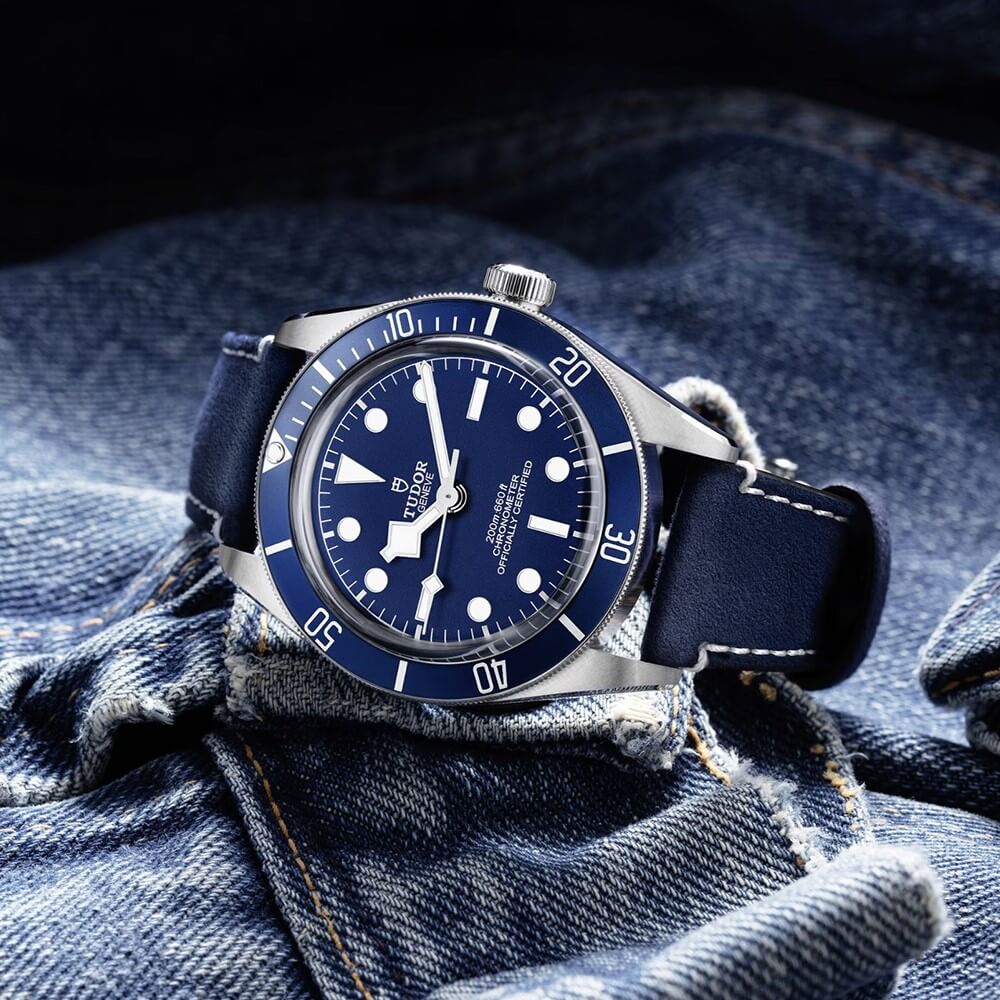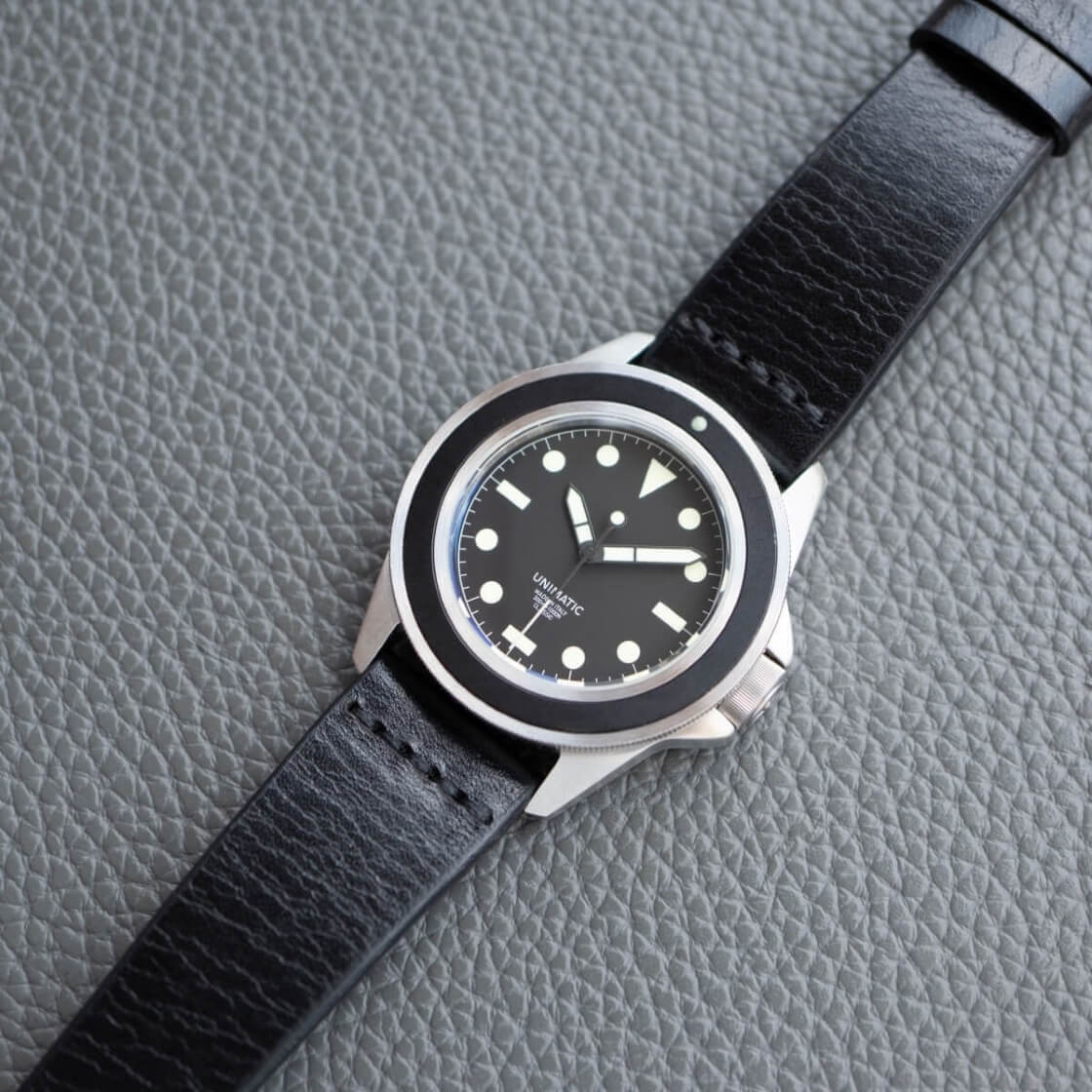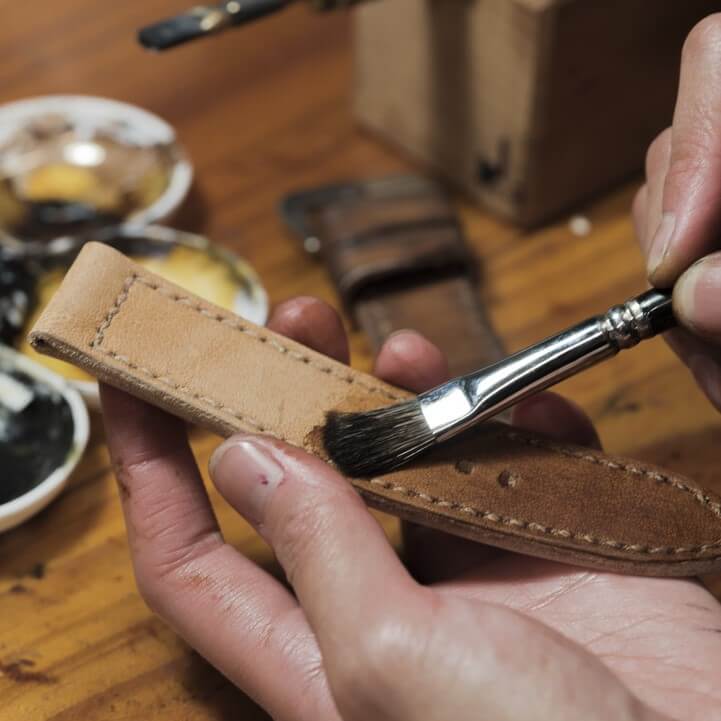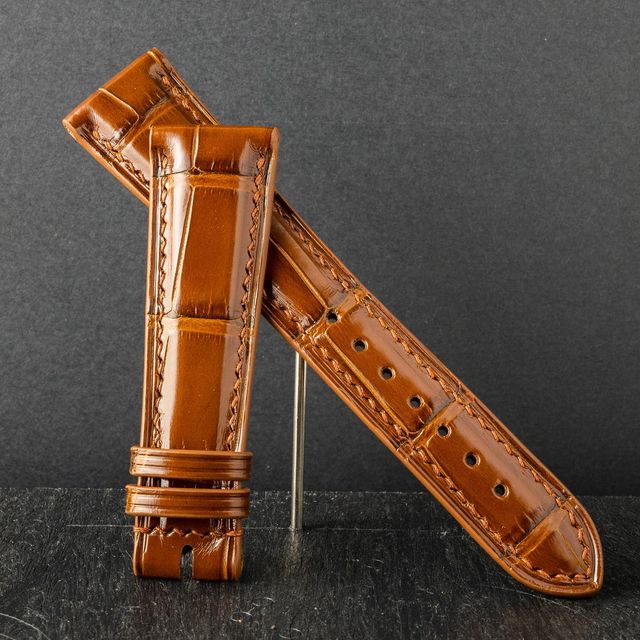Swimming With A Leather Watch Strap
First things first: yes, you can absolutely swim with a leather strap on. I've done it. But, pleaase understand that leather and water don't mix well. In this blog post, we'll explore the reasons why that's the case, what are the potential risks, and how to take care of your strap.
![]() Nenad Pantelic • October 23, 2023
Nenad Pantelic • October 23, 2023

TL;DR;
Can you swim with a leather watch strap?Yes, but...
What are the potential risks of swimming with a leather strap?
Potential damage and degradation of the strap.
How does water exposure affect leather straps?
Water exposure can lead to leather swelling, warping, and losing its natural oils, making it brittle and prone to cracking.
Are there other types of straps that may be more water-resistant?
Some straps may be treated for increased water resistance, but they will not be completely waterproof.
Are there specific types of leather that are suited for water?
Some leathers are more water-resistant than others (full-grain, oil-tanned, exotic skins), but none are truly ideal for swimming.
How should you clean and care for a strap if you swim with it?
Rinse with fresh water, pat dry with a soft cloth, and apply a leather conditioner.
How do leather straps compare to other materials for swimming?
Rubber and nylon straps and metal bracelets are generally better solution for water activities.
Ok, leather straps aficionados, let's dive into the post (no pun intended).
Leather Is Not Water-Resistant
The most obvious reason not to swim with a leather watch strap is that leather is not water-resistant. Leather absorbs water like a sponge, leading to a bunch of problems, including damage to the strap itself and the possibility of long-term wear and tear.
When leather absorbs water, it becomes saturated and, over time, its structure weakens. Continuous exposure to moisture can cause the leather to lose its shape, flexibility, and even color. The strap may become stiff, misshapen, and discolored.

Also, leather watch straps are usually glued or stitched together. When they get wet, the glue can weaken, and the stitching can become loose. This can lead to strap breakage, and nobody wants their expensive watch to suddenly fall off their wrist while swimming.
Many leather straps have an inner core made of materials like cardboard or paperboard. This inner core helps the strap maintain its shape and provides structure. However, this construction is particularly vulnerable to water damage, and it's essential to be aware of this potential issue.
But Some Types Of Leather Can Handle Exposure To Water
While most types of natural leather are not suitable for prolonged exposure to water, there are specific types of leather that are more water-resistant or can handle brief exposure to moisture better than others. Here are a few types of natural leather that are more water-friendly:
Waxed or Oiled Leather: Leather that has been additionally treated with wax or oil is more resistant to water. The wax or oil creates a protective barrier that can repel moisture, to some extent.

Full-Grain Leather: Full-grain leather is the top layer of the hide. It is extremely durability. And it's less susceptible to water damage than some other leather types. Example is the Shell Cordovan leather. Of course, while it can handle brief exposure to water, it's not completely waterproof and should not be submerged or soaked for a long time.
Oil-Tanned Leather: Oil-tanned leather is treated with oils and waxes during the tanning process. That makes it more water-resistant compared to other types of leather. It can handle light moisture.
Reindeer leather, also known as "Sami leather" is well-known for its water-repellent and water-resistant properties. The reindeer leather has tightly packed fibers, which make it inherently less porous than other types of leather. This density reduces the ability of water to penetrate the leather.
Exotic Leathers: Some exotic leathers like alligator or crocodile are naturally water-resistant. Crocs spend most of their time in the water, after all. But keep in mind that watch straps are usually lined with a calfskin piece of leather on the underside.

It's important to understand that even these, more water-resistant types of leather, should not be submerged in water or exposed to prolonged moisture. They may handle occasional splashes better than other leathers, but it's still better to keep them dry and to wipe them down if they get wet.
Potential Irritations & Allergies
When leather straps soak up water, they create an ideal environment for the growth of mold. This can cause skin irritations or allergies if you continue to wear a strap for an extended period.
In addition to potential allergies, the dampness of a wet leather strap can also cause skin irritation, chafing, or even rashes, which can be quite uncomfortable.
Moisture also can lead to a leather strap becoming sticky. Water particles soften the leather and, in some cases, leather absorbs and retain the water. When the leather softens, the surface becomes tacky or sticky, making it uncomfortable to wear. And smelly. Yikes.
How Should You Clean And Care For A Strap If You Swim With It?
If your leather watch strap has been exposed to water, you can take a few steps to clean and care for it. This might prevent damage and ensure the strap's longevity. Here's a three-step guide on how to care for a water-exposed leather watch strap:
Rinse with fresh water:
As soon as possible after swimming in saltwater, rinse your leather watch strap with fresh, clean water. Use a gentle stream of water to wash away the salt and any sand or debris. Avoid using hot water, as it can damage the leather.
Pat dry with a soft cloth:
Carefully pat the leather strap dry with a clean, soft cloth. Avoid using excessive heat or direct sunlight for drying, as these can cause the leather to become stiff or discolored.
Condition the leather:
Once the strap is completely dry, apply a leather conditioner or cream to moisturize and restore the leather's natural oils. Conditioning helps prevent the leather from becoming brittle or dry. Follow the product instructions for application.
Go Ahead And Take The Plunge
If you're planning a vacation and you want to wear your watch while swimming, then think about buying a rubber or nylon strap. These materials simply perform better in water activities. They dry quickly and can withstand rough handling.
But if you are enjoying a party, our advice is simple: go ahead and take the plunge, leather strap watch and all. Life is too short to miss out on those spontaneous moments that create unforgettable stories. So why spoil the fun by worrying about a leather strap?
Capture the moment, and have the time of your life. As for the leather strap on your wrist, be prepared to replace it, because it's unlikely to last long after being soaked. But really, who cares? The memories you'll carry far outweigh the cost of a new strap. After all, it's the stories and shared experiences that make life truly remarkable.